Now that we have a foundational understanding to soil ecology and complex systems science, we can start to give some attention to the perennial plants in particular on the landscape, specifically the ones in a forest.
There’s a few folks I want to talk about as well— specifically some of the early leaders of the conservation movement in the United States. While most folks are familiar with Henry Thoreau, digging just a bit deeper finds many more interesting characters who paved the way for naturalism, and not surprisingly most of those folks either vocally identified on the left— such as Henry Stephens Salt (sorry, I know he’s British but a personal favorite), John Muir, and Aldo Leopold. While Aldo’s politics aren’t really known, he’s also quoted with saying, "Theoretically, the mechanization of farming ought to cut the farmer's chains, but whether it really does is debatable” and if that word choice doesn’t ring any bells, I’m not sure what to tell you.

That said, I do want to dig in specifically a bit with Aldo Leopold, because he is probably the less likely of that list you know, and one of the more important figures of the group. A prolific writer and naturalist, he has been given credit for coining the term ‘land ethic’, which is really important because the concept has evolved into something we seem to still be struggling to define today— the term holds that while humans are an important part of the ecosystem, we are only one part of it. As he stated,
“The land ethic simply enlarges the boundaries of the community to include soils, waters, plants, and animals, or collectively: the land. . . A land ethic of course cannot prevent the alteration, management, and use of these ‘resources,’ but it does affirm their right to continued existence, and, at least in spots, their continued existence in a natural state.”
I don’t think there’s anyone on the left who doesn’t find their ecological beliefs to fall somewhere around that statement. We had discussed in the first episode that the biggest challenge for a lot of conversations about nature is about the place of humanity within it— not as a separate existence, and it is with Aldo Leopold that this is first really articulated on a national scale. He belonged to a number of writers over the course of fifty years articulating the same things, his voice is the one that left the biggest impression.
In this sense we have a stewardship of the land. As we exist within nature, we are also responsible in some capacity for what havok we bring— for example, with invasive species. We have a responsibility for the damages we create in some capacity, and I’m not saying that we eliminate all invasives, but rather keep them in check until native species can learn to compete and co-evolve. That’s our responsibility, and if we choose to advocate for Land Back, that doesn’t just mean for the people whose lands were stolen from them, but to all living things on the landscape.
Before we dig into the basics of forest ecology—you might be wondering, again— why are we even talking about this? A fundamental understanding of forest ecology is necessary as we look towards nature to develop sustainable practices for communities to become more resilient to the challenges climate change and the effects industrialization has on the planet. We are better able to predict outcomes from our decisions, develop better systems for lumber, wildlife— and the food wildlife provides us— and continue to create healthy, dynamic systems that are complex and anti-entropic, helping take in energy from the sun for the planet. In understanding this dynamism, we can both help combat climate change and accelerate our movement towards a more sustainable planet.
When we talk about forest ecology and our role in managing and manipulating that ecology, it’s important to remember that forests are hundreds of years in the making, and we aren’t going to fundamentally change the entire structure of it in months or years, unless you’re looking to just cut most of it all down. Many times, the decisions made to create healthier forest ecosystems aren’t done for yourself or for today but for generations from now, and it’s our duty as stewards of the planet to recognize that we are responsible for doing everything we can to help make the planet more sustainable for those future generations. With that said, let’s dig in.
Forest Mechanics
The term that almost every forestry class begins with is “The ABC’s of Forestry”, meaning A, Abiotic, B for biotic, and C for cultural factors at work in the forest. Abiotic refers to nonliving components of the forest community— the minerals in the soil, the topography, the climate. These pieces support the living parts. Biotic, is, well, everything else— the living stuff. The Cultural elements are the interactions that humans bring to ecosystem functions— harvesting, clearing, developing, and manipulation to those systems through forestry practices, for better or worse.

So let’s start with abiotic factors in the soil. These systems support the forest and determine the species of trees and plants that grow, which impact the animals and the soil biology development in that community, as well as how quickly those things grow. Abiotic site factors are often identified as more important than the biotic site components because of their ability to significantly impact how productive a site can be and in many cases the abiotic factors are not changed easily, unlike a soil biology. When we talk about climate in terms of abiotic factors, we aren’t speaking simply to the temperature and precipitation patterns, but humidity, atmospheric pressure, prevailing winds, among other things, which are all impacted by more rudimentary details, such as latitude, terrain, elevation, and regional water bodies. Further, abiotic factors can be significantly impacted by human intervention, for better or worse— usually worse.

Now, technically speaking, soil is considered an abiotic factor, despite hosting millions of living micro-organisms. This is primarily because of the soil’s functional relationship with plants—more specifically the soil as it encompasses dirt. We have talked about sand, silt, and clay, but in case you haven’t looked at the previous content, sand is the largest particle of the three, clay being the smallest, and silt in the middle. Sand is great for drainage and aeration, but can often lose nutrients for that same reason. Clay is on the opposite end of the spectrum, with compaction being a problem leading to poor drainage and aeration, and generally is well suited for maintaining nutrients. Silt is slightly better than clay, but not really a good ‘middle ground’. When you hear the term loam, it is speaking to having a balanced mix of all three components so it has decent drainage good nutrient containment. Because of this, loam is ideal for tree size potential, and trees will generally be able to reach their maximum height in loam, while they will remain generally smaller in stature in sandy and clay soils.1
The second piece of the abiotic component of forest ecology is topography— the amount of slope steepness and the aspect, which influence tree species composition and diversity. Slope is a double-edged sword— more slope allows for more diversity, to an extent, but erosion and runoff are a problem, and generally speaking, the more slope you have, the less soil depth you have, limiting the productivity of the land, while still giving you more surface area for growth. It makes sense if you think about it; runoff reduces the ability of soil to build. From a farming perspective, developing terraces on hills allows for more productive farming compared to flat land, as well as allowing for more diversity in what you can grow. In nature, however, the bottom of those slopes end up as extremely fertile soil as all of the runoff accumulates there. Traditionally, that’s why river deltas and the foothills of mountains have always been the site of agricultural productivity.
The second component of topography is aspect— or, the direction that the slope faces, which impacts the amount of sunlight, heat and wind that the land is exposed to. The primary area that aspect impacts comes from solar insolation, which is just a fancy term for sun exposure. East-facing has the strongest rays from early morning to noon, while west is the opposite and receives its strongest rays in the evening. North and south receive the strongest rays at noon, but north’s rays are significantly more weak than the south.
Because of this, south-facing slopes tend to be warmer and drier, and conversely, north-facing slopes will be cooler and more moist, which in many climates is better suited for forest growth. East-facing slopes, because they get early morning sun, warm up earlier in the day and stay cooler in the afternoon, limiting exposure to higher stress during the hottest parts of the day, while west-facing slopes warm up later when it’s already hot and dry out in the evening.
North and east are the two better sites for forest growth because of their limited exposure. Depending where you live, this should give you an idea of how you want your garden to be laid out, as well.
The Living Forest
Moving onto the biotic components of forest ecology, we’ll start with the most obvious— trees. When you see a tree in the forest— is it healthy? I mean, how can you tell— it’s big, and it’s alive, so it must be doing fine, right? Well, trees actually need to continually expand their crowns— that is, their upper canopy and branches, to maintain their health. So when you see trees that are very large with limited branches, those trees are probably stressed, and if you’re looking to manage some chunk of forest for productivity, it might make sense to cut those trees down and let the larger trees expand their canopy. Those trees with larger canopies will produce more nuts or berries than if you kept multiple trees with smaller crowns, making removing the weak tree better for the health of the environmental community.2
Of course, sunlight isn’t the only impact on trees. Insects, disease, and animals can also both positively and negatively impact tree health, whether we are discussing deer eating the bark of young trees or decomposing animals returning organic matter to the soil.
So when we’re talking about these various factors in forest productivity, it’s important to be aware of the Law of Minimums and the Law of Maximums. They’re pretty straightforward— the law of minimums states that as a factor approaches its extreme minimum— say, a water shortage— the relative effect becomes increasingly great. Eating a bowl of soup if you’re starving to death is going to have a bigger impact on you than if you’re having second lunch, right? The law of Maximums is the mirror of this— if you’re already unhealthy and start eating double bacon breakfast burritos, those are going to have a much more significant impact on your health than an otherwise healthy person doing the same. These two laws apply to all of the different factors that impact tree health.
Sunlight Access
The most significant factor for trees, and most plants, is shade tolerance. Generally, trees fall into one of three categories— shade tolerant, intermediately tolerant, and shade intolerant. Most folks are aware that some plants do better in shade than others, I know. However, shade tolerance impacts whether or not tree seeds will germinate, and intolerant trees may not germinate under 50% sunlight, while shade tolerant trees will up to 20% sunlight. Shade tolerant trees, however, tend to grow slower because the process the sun’s rays less efficiently, while shade intolerant trees grow quickly and use the sun’s rays less efficiently.3
Shade tolerant trees are generally able to grow under the main canopy, will grow slowly, and are generally longer-living trees. Because they grow slowly, they are able to handle stress well, making them often more resilient than shade intolerant trees and they can wait in the understory until the fast-growing shade intolerant trees die off. Because of this, generally their full development happens later and because of this they are considered a late-successional forest species. On the east coast, these shade tolerant trees are usually beech, hemlock, sugar maples, red maples, black gum, hornbeam, dogwood, hawthorn, hickory, and basswood.
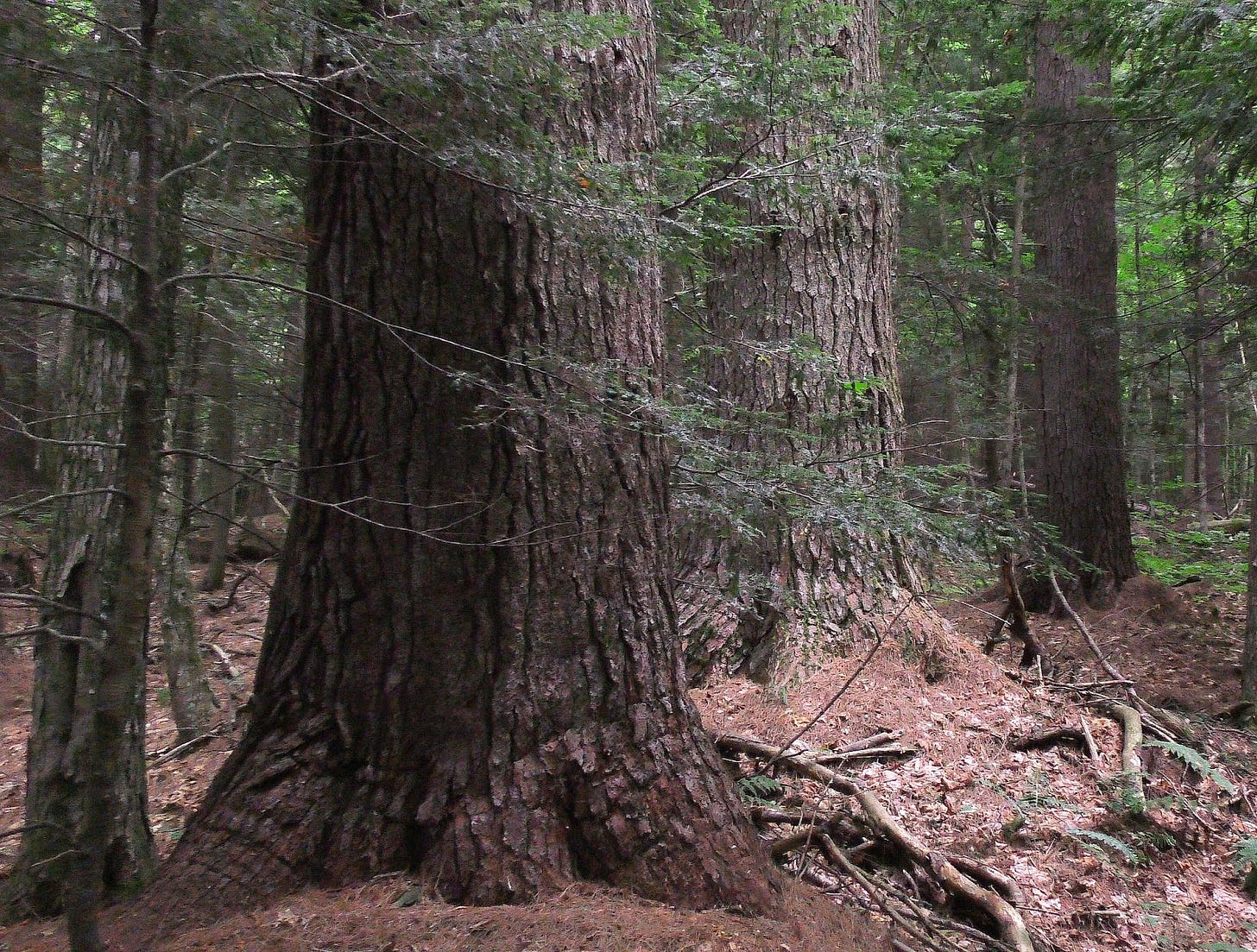
Intermediate shade tolerant trees need more sunlight than shade tolerant trees, grow more quickly than the ones listed above, and are also generally long-lived. Typically, they produce a lot of seeds because their germination needs are much more specific than either open field or full forest, and generally rely on canopy gaps for their species to survive. The most common members of this category of trees are red oak, white oak, white pine, and hickory.
Shade intolerant trees, as stated before, have rapid growth and usually short lives. They produce lots of seeds that are generally wind-distributed, since they cover the top layers of canopies and need their seeds to be carried to wherever large ground disturbances may have taken place, which is where they will be able to germinate due to their needs for full sunlight. The most common species for this category is aspen, poplar, white ash, birches, cherry. Again, I’m focusing on the east coast of the US, simply because I don’t know enough to speak on other areas.
Now that we’ve framed up some basic categories for tree growth, I think the process of identifying forest succession will be fairly straightforward.
If you’re not familiar with the term, forest succession is the natural progression of forest communities from one type of community to another. Forest succession continues to progress until either an event destroys the forest or it reaches its climactic stage— we now typically talk of forests that have been at this stage for an extended period of time as ‘old growth forests’, and there are a handful left in the Northeast.
Forest Succession 101
The process begins with a disturbance. It could be a flood, earthquake, volcano, or a subdivision that gets cleared and never built. Pioneer species, those species that love full-light and fast growth, move in quickly to cover the soil. Eventually, those transitional species die off and the late successional species take over, entering into that climax stage. This process usually takes hundreds of years, and can give some essential clues into the history of the forest or land you’re interested in.4
To dig in a little deeper, during the pioneer species stage, we don’t see those fast growing trees show up right away. Think of an abandoned farm— the grasses, weeds, and ferns take over early on. These broadleaf, herbaceous species grow quickly and are often annuals or short-lived perennials, and they begin the process of breaking up any soil compaction, adding organic material, and building those biological communities. If we think back to the first episode on soils, that soil cycle with weeds to trees is a reflection of this pioneer species stage, but from the underground. As this system develops, shrubs and tall grasses begin to take over and crowd out those annuals. These bushes tend to be various low-growing berries and vines, as well as smaller trees such as dogwood, sumac, and viburnums. Of course, the trees that begin to take over are dependent on a number of factors; soil mineral make-up, water table, seed availability from nearby trees, rainfall, and recent fire— just to name a few.
Thse tree species tend to be —slightly— tolerant of shade and more resilient than grasses and weeds. The last grouping of this pioneer stage are the late successional pioneer plants— the trees, which compared to the bushes and grasses— are slower growing and more long-lived. The forest will be covered in a mix of these plants, as there is no clear cut time when one species completely replaces another, and the topography of the landscape can impact access to sunlight & nutrients, making some areas succeed more quickly than others. If we think about the previous article, we discussed the impacts topography often has on soil will inevitably impact tree dispersal.5 The top of a hill may become home primarily to trees like red maple, while the bottom of the hill will be where the sugar maples remain, where their roots have access to more moisture. These nuances in the forest composition help as understand what’s happening under the soil and give us a better appreciation for the canopy composition and the need for diversity.
So now that we know how succession works, we can use our ability to manipulate the forest to either accelerate succession or set it back, depending on what your goals are. For example, if we thin out a forest, we allow the remaining trees to have better access to sunlight and nutrients, helping them grow more quickly and moving the forest succession more quickly. Clearcutting for timber, for example, will set the process back to pioneer stages.

Now, it’s not only plants that are impacted by forest stage succession, but animals as well. Some species adapted to specific stages of forest succession. By maintaining certain habitats in specific stages, we are able to help or attract animals that there is a vested interest in increasing the population of. For example, deer, the most commonly hunted meat in North America, do well in late stage pioneer forests where fields are at the late stage of transitioning to forest (they do particularly well in human-managed savannas, but that’s a topic for another day).6 The early stage of forest succession after late stage pioneer forests, when the fast-growing trees try to take over, is the converse of that late stage pioneer forest, and actually has the least amount of food available for animals, and is traditionally the hardest forest stage to hunt within. This mini-stage is called the pole stage, because the trees all look like poles as they stretch up to the sky to outcompete each other for the canopy, prior to the natural thinning process that comes through a mix of human, animal, and the interference of acts of God.
Does this mean we only want one or two forest stages? No. In fact, a healthy forest has a mix of each of these stages, as well as a mix of species of trees in both shape and quantity to meet the demands of all species of animals.
By having all of this unique habitats, a forest is more resilient to any changes through its complexity. Further, as we are able to recognize these habitats and successional stages, we are better able to interpret the history of the forest.
With all of that knowledge, it makes sense to now see how to identify the trees in your forest. Proper tree identification is essential for knowing how best to manage everything from a single tree to a large group of trees, or "stand," in a forest. For example, if you want to manage a forested area for wildlife, you could encourage the specific tree species that provide high-quality wildlife food and cover. Tree identification can also give you a better understanding of the environmental conditions at the location where a tree is growing, such as whether it’s a wet site or a dry site. This can help you know what trees would grow best there if you are going to undertake tree planting or other management activities. This approach is often summed up by the saying, “plant the right tree in the right location.” It’s also crucial in helping identify what other species may exist in to forest, some of which may be edible, and if you’re into mushroom hunting, knowing your forest is crucial in identifying species.
Tree Identification
There are 10 major tree parts, or attributes, that are most useful in tree identification, and I know that sounds like a lot and there’s no way you can listen to that long list, but it’s pretty straight forward: Leaves, Flowers, fruits, Bark, branches— specifically twigs, Smells, Tastes, Tree size, shape, and location. Leaves, flowers, and fruits are often the easiest to use to identify trees because of their distinctiveness, however these only allow you to identify trees during specific seasons. Bark identification is considered to be the most useful because of its ability to be done year-round.
For the sake of time, we’re gonna talk quickly about leaves, focusing on the more useful trees, and get you guys familiar with the terminology of leaves for identification. I know it can be a bit daunting, because it seems like there’s literally a million different trees, but understanding some basic concepts helps frame the process in a much more digestible way, and it will be ultimately more useful than trying to memorize leaves without any index for the identifiable markers.
There are 3 main types of leaves on the east coast of North America. The first and most common is the broad and flat leaf. These are the leaves found on most deciduous trees. Deciduous trees are trees which lose their leaves every year. Sometimes you may hear the term hardwood used for deciduous trees and softwood for evergreens— this doesn’t refer to the wood hardness at all. These leaves can be a range of sizes from 1 to 30 inches as well as being capable of being either very narrow or very wide. The second most common type of leaf is the needle— even though most folks don’t think of it as a leaf. Needles perform all the same functions as leaves, and do actually fall off trees, just not at the same time and they usually survive multiple years. Needles can be clustered on branches or they can individually connect to twigs. The last leaf type is the scale-like leaf, which are usually very small— less than an inch, thin, flat, and are much more common on introduced, non-native species. Cedars are an example of a native tree with these scale-like leaves.
With that basic knowledge, we can look at leaf arrangement, structure, and margins. Again, we will cover this enough just so you know what to be looking for if you want to pursue tree identification on your own. With broad and flat leaf— aka, most of the leaves you think of when someone says the word ‘leaf’, there are generally 3 main arrangement patterns— the first and most common is alternate arrangement, which means the leaves on the twig rotate which side of the twig they are on; left, right, left, right. The second arrangement is opposite arrangement, which just means the leaves are paired together. The last and least common arrangement is whorled— which has 3 leaves attached in the same spot. Every leaf has a base with a bud— a little bump— protruding from just above the base.
Let’s jump into leaf structure real quick, specifically with broad and flat leaves. Simple leaves have a single leaf stalk and are the most common leaf you will find. Compound leaves have leaflets— they look like mini leaves on a green twig. They are not small leaves in a cluster though, because they only have one bud at the stem of the leaf. These leaves are either pinnate— meaning that the leaflets are arranged opposite from another in pairs, or palmate— meaning that all of the leaflets share a common point that they connect together.
Lastly, let’s talk quickly about leaf margins— which is the edge of the leaf. Leaves may have one of basically 5 margins. Some have what’s called a serrate edge—which means that it has sharp, forward-facing cuts in the leaf. Double serrate leaves have two different heights of sharp, forward-facing cuts. A third option you might see is a dentate edge, which is when the sharp cut or point faces outward. The fourth type is lobed— which looks like it sounds— rounded edges that stick out like earlobes. The last type is called entire edges, because the entire edge is the same, there are no breaks in the leaf shape at the margin.
And with that and a guidebook, you can identify probably 75% of the trees in your forest. We could talk further about veins and a bunch of other things used in leaf identification, but I don’t want to put you to sleep, just give you some core basics.
Forest Management
From here, we can transition towards forest management, called silviculture, where we can manage forests and align its health with our own through tree and plant management which can also benefit us. When folks hear the term forest management, what they usually think is to clear out the dead stuff so the living can thrive, and this is not very helpful.
Often times, standing deadwood— dead trees still standing, are an important habitat for certain species, and eliminating all of it doesn’t offer much benefit for the forest as a whole, while obviously carrying some negatives. When we say forest management, we mean identifying which trees to keep & remove and why we do so, as well as how to create healthy forest regeneration. A simple rule is to manage light— the primary source for all life— by looking up.
When we talk about forest regeneration, we are talking about the next succession of trees in our forest, and we can do that by looking at the ground and where light reaches the ground. New growth is dependent on whether the canopy of the trees in the forest is tight or closed. With limited light reaching the ground, many germinated seeds die. By removing unhealthy trees to create openings in the canopy, we can build seedling numbers over time and control which species will grow to become part of the canopy.
Here in coastal New England, where most of the land had been clear cut until the last 150 or so years, almost all of the forests here are pine-oak. If you walk through the forests, you’re almost guaranteed to see large pine trees with almost no branches until the canopy, where the branches spread far, blocking out the sun for many other species. This is called canopy spreading.
Removing some of these trees, or removing the unhealthy trees in the understory, helps ensure that regeneration occurs & is sufficient for the long-term viability of the forest, and it also helps the site meet its carrying capacity potential. But here’s the thing; simply cutting these trees to open up sunlight does not mean that the understory is ready to grow.
To ensure desirable outcomes, we have to consider the composition of the understory and the canopy. Are the current trees desirable? I’ll use our current pine-oak forest in my backyard, which abuts more woods and equals a couple dozen acres. No, many of the trees are not desirable. I currently have mostly pines, some red oak, even less white oak, one big-tooth aspen, a couple of eastern red cedars, a handful of pitch pines, a couple dozen grey birches, less than 10 black cherries, and a few red maples. The shrub and understory layers are a mix of blueberries, huckleberries, eastern white pines, a few red maples, some invasive honeysuckle, and one spot of japanese knotweed. There’s a handful of spring ephemerals and some isolated spots of ramps— and the occasional grass groundcover is non-native but not invasive. The soil duff layer is mostly healthy, and there’s very little evidence of any severe earthworm destruction. All in all, not a bad site at all, even if I’m not particularly excited about the canopy composition. So, what can we do here?
There’s a number of factors to consider as we think about the food web on this site. First; who is supporting pollinators through their pollen production or as larval hosts? Making sure pollinators are supported are the base of our food web, so this is particularly important. Oaks are hands down the most important for pollinators, followed by (in this ecosystem, specifically) pines, cherries, hickories, and maples. Below these species, most native trees support roughly the same amount of pollinators, but often each tree has a handful of specialist pollinators which require those particular species. What this means is that having a diversity of plants, not necessarily just the ones with the highest pollinator support, is of particular value.
What’s worth noting, then, is what species are particularly absent that support significant wildlife, then paring the list down based on site conditions— what we’ve been talking about for the past two articles. Hickory, chestnut, hemlock, elm, yellow birches, alder, beech, American hophornbeam, sassafras, Ash, tuliptree, tupelo, chokecherry, and hackberry are a majority of the trees that should, given the age of the forest, be starting to arrive in the understory in order to progress in its succession to a mature forest. Based on a number of site conditions, we can start to think about which we might want to help integrate into the understory, and by reading the light access on the forest floor, we can begin the process of helping the forest move into the next stage of its life while also supporting the highest amount of pollinators.
We can do the same for the understory— the blueberries are a particularly valuable understory species for pollinators, but it’s only one of many— many of which seem to be conspicuously absent. Dogwoods, viburnums, witch hazel, hazelnuts, serviceberry, sumac, deerberry, and striped maple are valuable missing species in this particular forest. Again, we can start thinking about site conditions, and what species are of more (or less) value for us and the diversity we want to see within the landscape.
We can continue to go through the layers of the forest to identify the species that support the most diversity, offer very specific and rare ecosystem benefits and start asking important questions like, what benefits can I get from these plants that aren’t necessarily here for my needs, but can offer benefits for humans?
Here’s the thing; nearly every species has a human benefit, we’ve just become so disconnected from the landscape to understand and value these benefits. Part of learning the landscape around you is learning how we are— as humans— evolved to benefit from all of the diversity around us. It’s what makes us human.
We can also start asking ourselves an obvious question— if these species are a ‘fit’ for my site, why aren’t they there now? Wouldn’t nature put the right tree in the right spot— how could I boldly assume I know better than nature? It’s actually fairly simple. We have often clearcut ecosystems so many times, that natural regeneration is difficult because seed for mature forests are limited, and often cannot travel fast enough to return back to many landscapes. This becomes more obvious when you see a forest understory that is an exact mirror of the canopy trees; the only seed in the soil is from those same species, and the forests get trapped in a specific stage of succession.
The other obvious piece of this question is that our current time is one of the only times in the history of the forest where it wasn’t specifically directed by human intervention. Creating ecosystems is what humans have done since the first man learned how to control fire, and we have improved landscapes for hundreds if not thousands of species across the globe.
Now, why wouldn't I want to try to make the forest something else completely, then? Isn’t that the natural progression of human intervention? I mean, I could, but are the conditions on the site capable of supporting those trees without significant input on my part, and would they be sustainable? If the forest was then left to be wild, would any of those trees survive on their own, and what would they offer to the native food web? Would they only support other non-native species and generalists?

To circle back, when we are looking at understory growth and where to open up a canopy, we want to identify not just the species we want to see move into line in succession within the forest, but healthy trees which will be able to do that role as quickly as permitted. This may mean planting the trees you want for the future 10, 20, or even 50 years in advance.
To transition to the bigger picture, the structure in our forests have two components, vertical and horizontal. Vertical is, as you probably would expect, the arrangement of plants from the soil to the canopy. Horizontal structure looks at the arrangement of the species mixes and the ages of those trees, as well as the transitional areas for forest successions. These trees that we identify to become the future trees of the canopy, the ones we are clearing the canopy for, are called residual trees. By controlling the establishment, composition, structure, and growth of the forest, we are able to help guide it to the forest with the desirable traits we want to see in it.
Healthy forest systems are complex. When decisions are made about clearing trees, it must be made with both the local impacts and forest-wide impacts considered. When we start to consider these trees to cut, we have to understand its place in the canopy. The largest trees with the biggest crowns—in my case, pines— are considered the dominant tree. Co-dominant trees are usually slightly smaller, but often a clear second in size. Generally, they don’t have those same round crowns, but may appear as though a chunk was taken out of the round crown, usually from lack of room to continue expanding to take its natural form. For me, these are primarily the red oaks. Intermediate trees are generally the trees you see trying to break into the top canopy, usually with poor crowns and few branches. Depending on shade tolerance, these trees may or may not respond well to having more access to sun because of their poor growth structure overall. The last layer is the suppressed layer, which is usually similar trees to the dominant and co-dominant trees, but have zero access to direct sun. The goal in cutting trees isn’t to simply cut down the undergrowth, but to cut trees that are competitive with one another for the same space. If we think about when we had talked about complex systems— competition is a negative-negative relationship, there is no benefit for either tree, so our best solution since we can’t move one of the trees is to remove it.
It’s important to remember when we’re doing this management, we don’t want to just cut any undergrowth. The suppressed layer is often the next ‘generation’ of forest canopy, and managing what continues to grow allows us to meet an end goal of what we want the forest to be.
By identifying the trees that you want, you can manage your forest to make it work for you and your communities’ needs. Additionally, it’s important to keep diversity in these crown trees for the stability of the native community.
Forest Regeneration
To keep this diversity as we think about the next generation of the forest, it’s important to consider that some sunlight needs to make it to the forest floor for seeds to germinate. This should be part of your considerations when making decisions on what to remove. Additionally, its important to keep in mind that you need trees that can provide the seeds, stumps, or suckers for species to stay in a forest ecosystem. There are 5 ways to keep tree growth after harvesting some of the wood.
The first, obvious way, is through seeds. I think that’s pretty straight forward. The second is through suckers. If you’ve ever had to battle briars, you know what suckers are-- new plants that grow off of roots that were impacted by some kind of stress. The third is through stumps-- called coppicing. Specific species of trees will grow from the stump of a freshly cut tree, using the same root system to quickly grow that same species and replace it. This is a common practice is smaller areas with limited resources, and the UK has a great history of it. Here in the United States, is a fairly rare practice, even though indigenous people often utilized coppicing, but it is gaining traction given the current ecological climate and focus on faster regeneration. By using the same roots, the replacement is able to quickly grow, and certain species can nearly recover their original size in a few years.
Pollarding is the fourth way to regenerate tree growth, and the idea is pretty much the same thing as coppicing, except you’re doing it not at the stump, but typically above a browsing height for specific animals. This is a great way to cut trees you want to harvest while keeping the new growth from being grazed on by wildlife or farm animals. This way the trees have a chance to recover without having to protect them extensively.
The last way to regrow trees is through cuttings, and there’s a few ways to do this. I don’t want to dig in too deep, as I do want to talk about these subject areas on their own on a future date. One last quick thing to cover— it’s important to make sure the trees you’re keeping are healthy— meaning no obvious glaring deformities that suggest health issues, split trunks— meaning 2 main trunks, which may snap during wind or snow.
We can develop canopies of food and energy producing trees that can sustainably replenish themselves by continuing to use the same root system, growing more quickly and more efficiently. Further, by keeping a thin canopy, we are able to have a secondary canopy of trees and plants that can further produce other resources— here in the US, that list includes willows, hazels, osage orange, and persimmons that can be kept smaller to provide edible fruits, nuts, and wood used for various specific tasks while also supporting tons of native pollinators and animals. If we are to integrate this forest canopy into an intensive rotational grazing system that we discussed in the soils topic, we can quickly build soil and have healthy grazing grasses, clover, and other annuals to further feed our ecosystem.
Using trees that offer natural bordering like osage orange, or building natural fencing with hedgelaying or woven fencing allows us to use all of the elements around us to maximize production in a way that is also beneficial for nature.
At this point we have covered the succession cycle of forests, how to ID the trees in your forest, and how to manage the health of your forest in alignment with your goals for sustainability. It’s important to keep these concepts in mind as you start thinking about how you want to work with the forest around you, whether it’s through working on your own property, a community piece of land, or through guerrilla planting.
If you’ve enjoyed this piece, which is equal to a 28 page chapter, of (so far) a 111 page book with 66 sources, you can support our work a number of ways. The first is by sharing this article with folks you think would find it interesting. The second is by listening and sharing the audio version of this content, the Poor Proles Almanac podcast, available wherever you get your podcasts. If you’d like to financially support the project, and get exclusive access to our limited paywalled content, you can subscribe on Substack or Patreon, which will both give you access to the paywalled content, and in the case of Patreon, early access to the audio episodes as well.
Soong, J. L., Janssens, I. A., Grau, O., Margalef, O., Stahl, C., Van Langenhove, L., Urbina, I., Chave, J., Dourdain, A., Ferry, B., Freycon, V., Herault, B., Sardans, J., Peñuelas, J., & Verbruggen, E. (2020, February 10). Soil properties explain tree growth and mortality, but not biomass, across phosphorus-depleted tropical forests. Nature News. Retrieved February 4, 2023, from https://www.nature.com/articles/s41598-020-58913-8
Jr..Ponder, F., Rutledge, S., & Sambeek, J. W. V. (1970, January 1). Nut production in response to thinning and fertilization for planted walnut. US Forest Service Research and Development. Retrieved February 5, 2023, from https://www.fs.usda.gov/research/treesearch/43804
https://www.rseco.org/book/export/html/257.html
https://smallfarms.cornell.edu/2016/04/forest-succession-and-management/
Influence of topography and soils on distribution of plants and animals ... (n.d.). Retrieved February 5, 2023, from https://www.researchgate.net/figure/Influence-of-topography-and-soils-on-distribution-of-plants-and-animals-in-North-American_fig2_41000172
https://www.nrs.fs.usda.gov/pubs/gtr/gtr_ne197/gtr_ne197_214.pdf




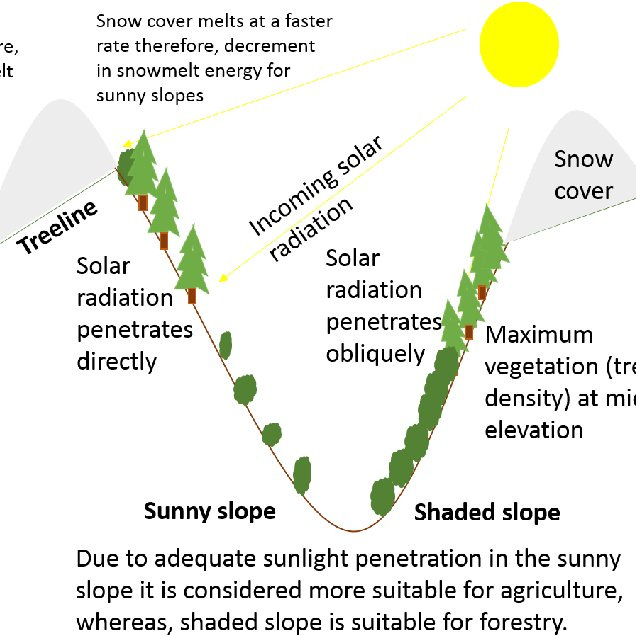

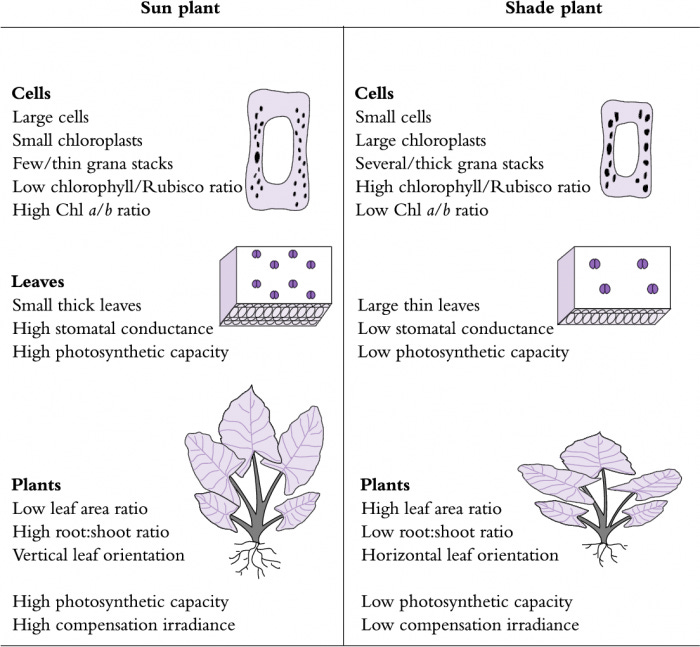


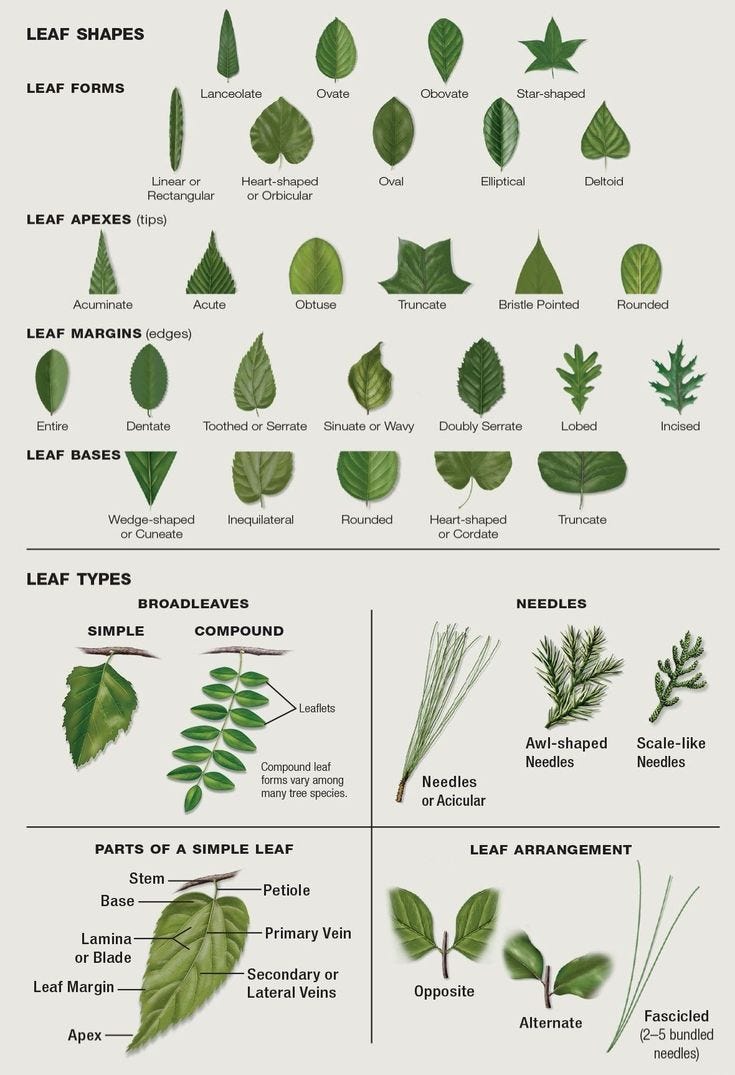
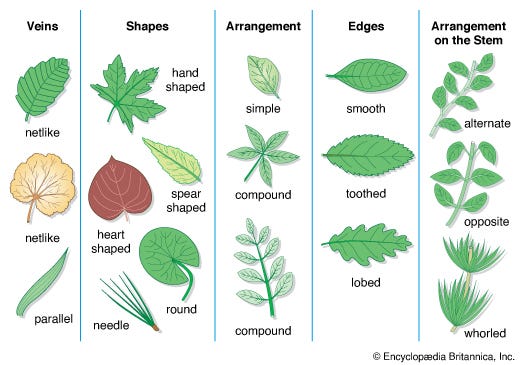

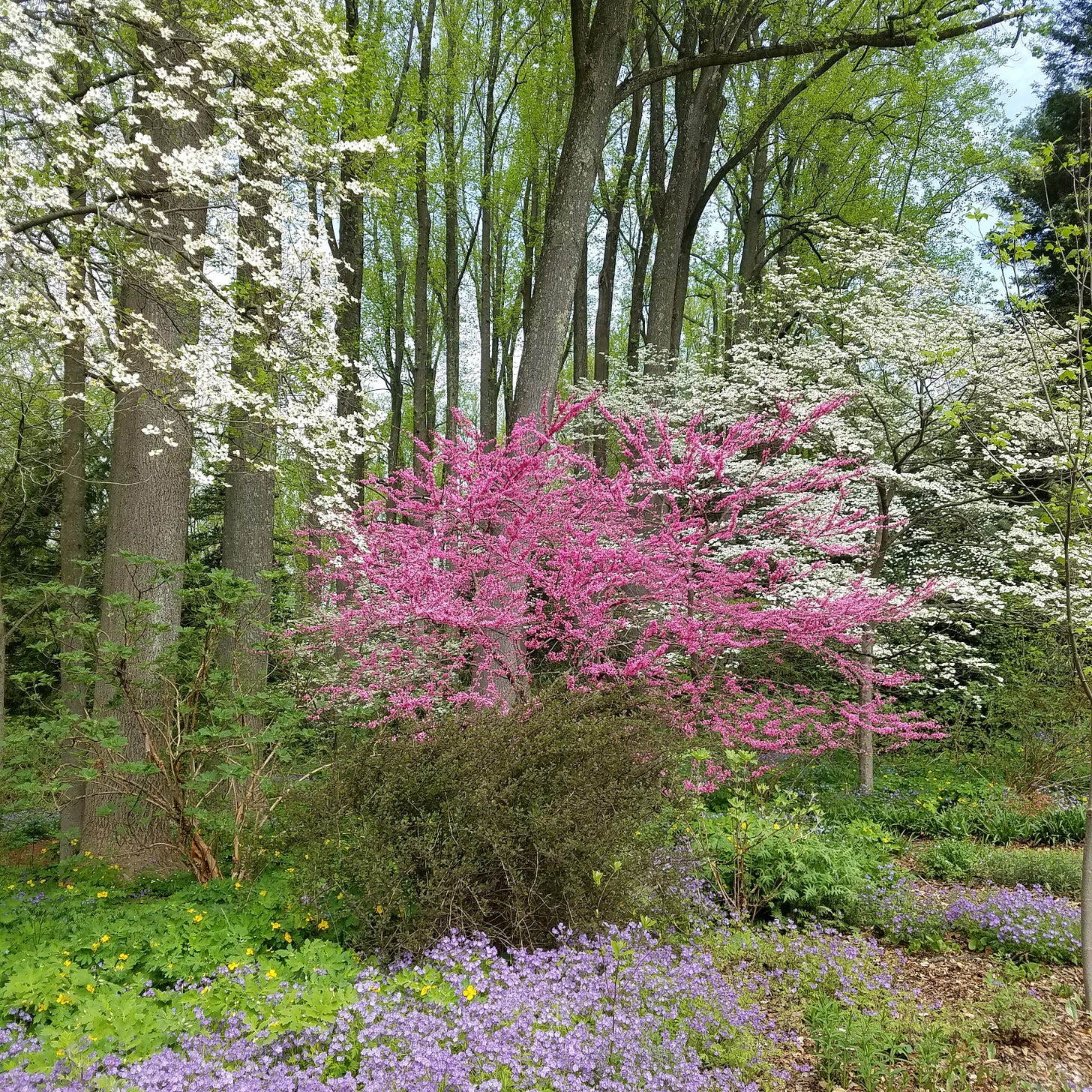
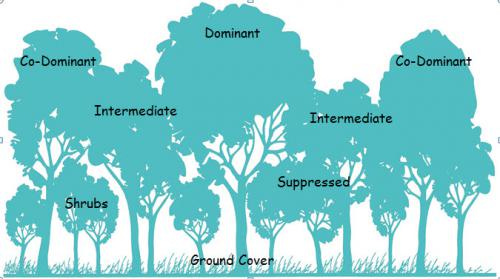
Are you familiar with the work of Herman Silas Pepoon at all?